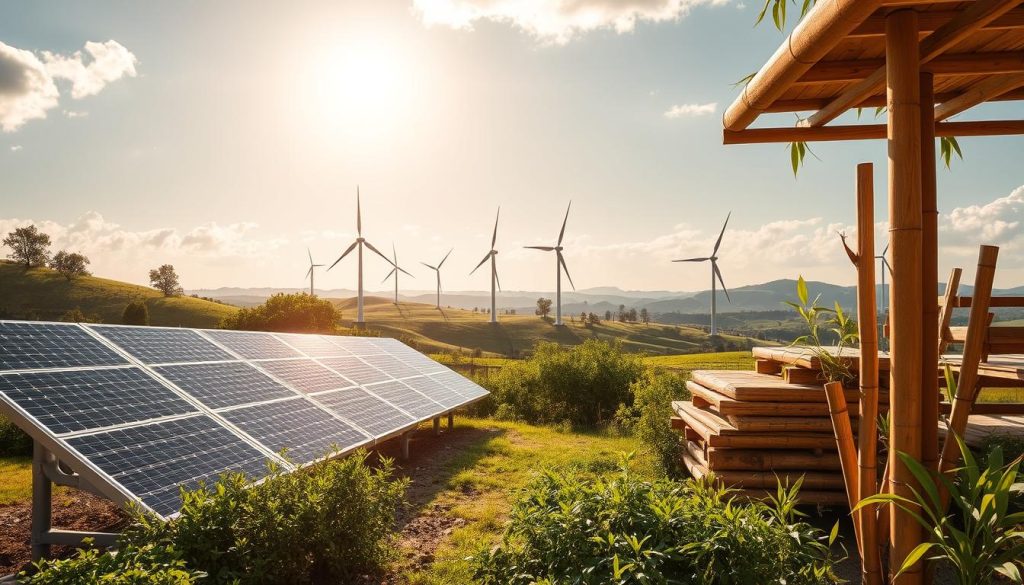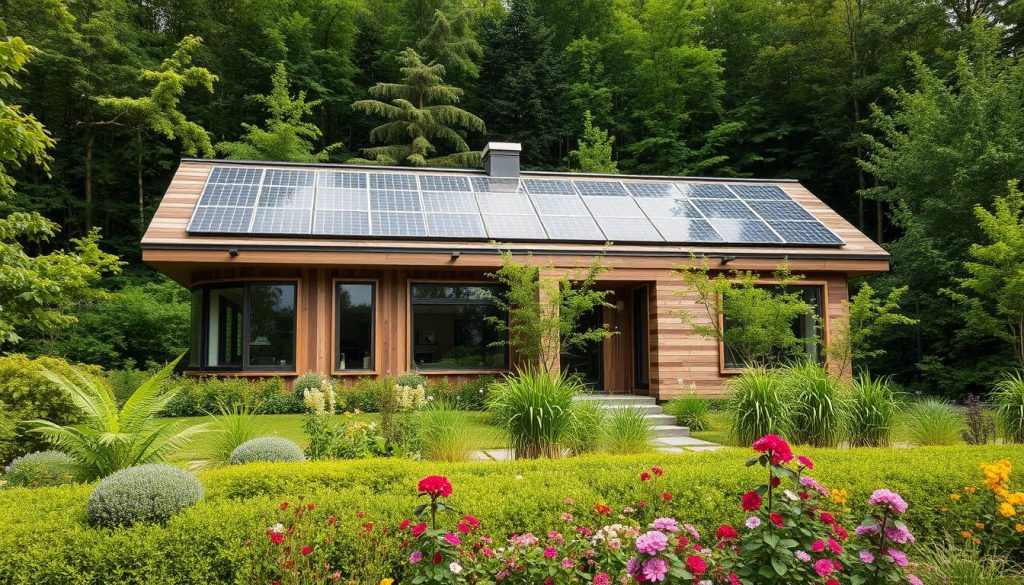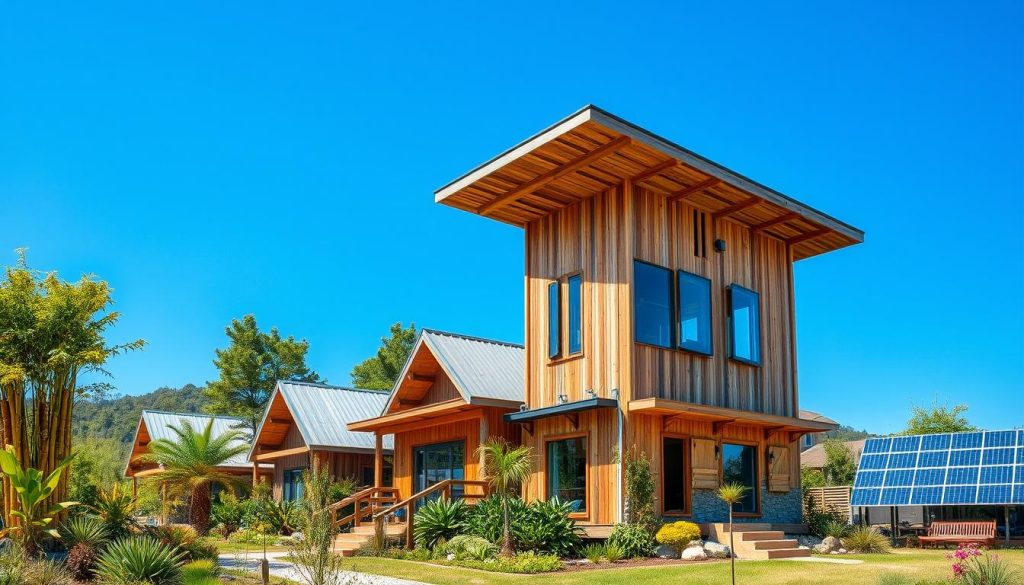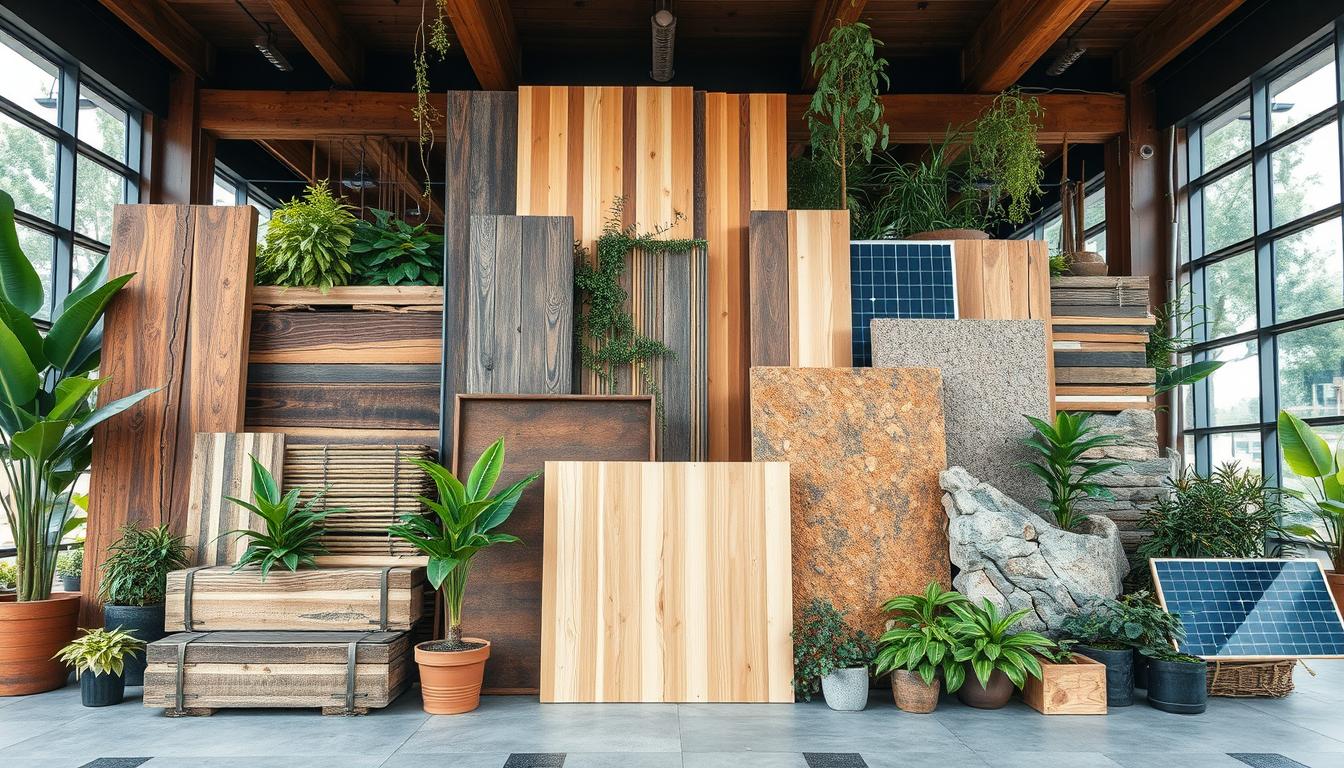I’ve been following the trend of eco-friendly building closely. The use of sustainable construction materials in homes and buildings is really interesting. These materials help reduce the environmental impact of traditional building methods.
Sustainable materials are made to cut down a building’s carbon footprint. They perform as well as, or even better than, traditional materials. Options like bamboo and recycled steel are growing, offering many benefits for the construction industry.
In this article, we’ll explore sustainable construction in more detail. We’ll look at the types of eco-friendly materials, their benefits, and how they help our communities. This is for homeowners, developers, and anyone interested in green building. I hope you find this journey into sustainable construction materials both useful and motivating.
Understanding Sustainable Construction Materials
Sustainable construction materials are becoming more popular. They help reduce our environmental impact while being cost-effective and high-performing. Let’s explore the benefits of these materials.
What Are Sustainable Construction Materials?
Sustainable materials have a low carbon footprint and can be recycled. They are made from recycled or low-carbon sources. This reduces our need for traditional, resource-heavy materials.
Benefits of Using These Materials
Using sustainable materials has many advantages. They lower a building’s carbon footprint and save natural resources. They also promote energy efficiency.
Many sustainable materials are durable and require little maintenance. They offer better insulation, which cuts down energy costs. This makes living or working spaces more comfortable.
Common Types of Sustainable Materials
Here are some common sustainable materials:
- Recycled construction materials – like recycled steel, glass, and plastic. They reduce waste and the need for new resources.
- Low-carbon materials – such as bamboo, straw bales, and rammed earth. They have a lower carbon footprint than traditional materials.
- Energy-efficient materials – like insulation from recycled materials. They help lower a building’s energy use and costs.
By using these materials, we can build green structures. They benefit both the environment and the people who use them.
The Importance of Eco-Friendly Building Practices

Construction and home design are changing fast. Eco-friendly building is now a must, not just a trend. Traditional building harms the environment a lot. It’s time to choose sustainable options that protect our planet.
Environmental Impact of Construction
The construction world is big on pollution and waste. Materials like steel and concrete need a lot of energy to make. This makes a big carbon footprint. Also, throwing away construction waste makes environmental problems worse.
Economic Benefits of Sustainable Practices
Going green in building can save money. Using bamboo and recycled steel cuts down on environmental harm. These materials last longer and need less fixing, saving money in the long run.
Green buildings are also more in demand. This means they can be more profitable. People want homes and buildings that are good for the planet.
Using safe materials and renewable resources makes buildings look good and do good for the planet. This change can make building and design better for our future. It’s a step towards a greener world.
Popular Sustainable Materials for Home Construction

Homeowners now have many eco-friendly materials to pick from. These materials help reduce environmental harm and add beauty and function. Let’s look at three top picks for green home building.
Bamboo: A Fast-Growing Alternative
Bamboo is becoming more popular for green homes. It grows fast and is versatile. This grass is a renewable resource that regrows quickly.
Bamboo works well for floors, walls, and even building frames. It’s strong and looks great, making it a better choice than regular wood.
Recycled Steel: Strong and Sustainable
Steel is highly recycled, making it a great choice for green homes. It’s strong and lasts long, needing less energy to make than new steel.
People use recycled steel for frames, roofs, and even furniture. It’s a key part of modern, eco-friendly homes.
Straw Bales: An Innovative Insulation Method
Straw bales are a new, green way to insulate homes. They’re made from cereal crop leftovers.
Straw bales keep homes warm and quiet, cutting down on energy use. They’re becoming more popular with those who care about the planet.
Using these and other green materials, homeowners can build or update homes that are good for the planet. The future of green building looks bright, with more options available.
How to Choose the Right Sustainable Materials

Building an eco-friendly home starts with picking the right materials. Look for certifications and choose local options. This ensures your home is good for the planet and cuts down on carbon emissions.
Evaluating Material Certifications
Finding the right sustainability certifications can be tough. But, it’s key to know them. Check for the Forest Stewardship Council (FSC) for wood or Cradle to Cradle for other materials. These show the materials are made responsibly.
Considering Local Sourcing Options
Buying materials locally helps your community and the environment. It cuts down on shipping emissions. Choosing materials from nearby means less harm to the planet.
Think about a material’s whole life cycle. Can it be reused or recycled? This approach makes your project sustainable and eco-friendly.
Real-Life Examples of Sustainable Construction Projects
The need for eco-friendly buildings is on the rise. I’m excited to share examples of sustainable projects that are making a difference. These projects show the power of green materials and inspire new ways to build.
Case Study: The Bullitt Center in Seattle
The Bullitt Center in Seattle, Washington, is a prime example of sustainable building. It’s a six-story commercial building that generates its own energy and treats its own water. It meets high environmental standards.
The center uses green materials like renewable and recycled ones to cut down on carbon emissions. It sets a high standard for sustainable urban development.
Innovative Homes Built with Reclaimed Materials
There are also homes being built with reclaimed and recycled materials. These homes show how green building materials can be reused. They create beautiful, functional, and energy-efficient homes.
From homes made with salvaged timber and steel to those using eco-friendly construction methods, they prove sustainable building is possible. These homes are truly unique and inspiring.

